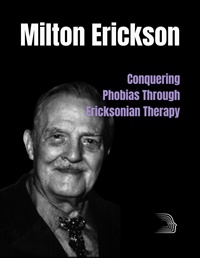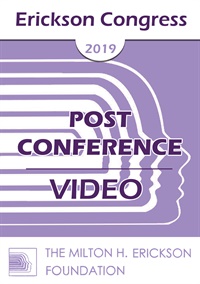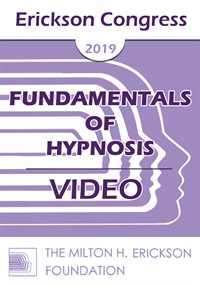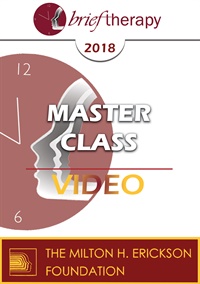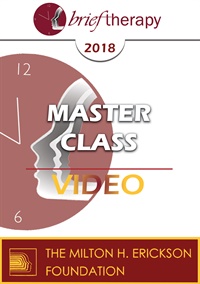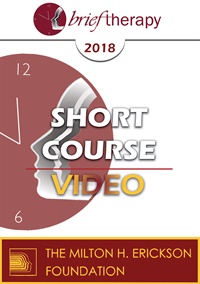- Average Rating:
- Not yet rated
- Topic Areas:
- Ericksonian Hypnosis and Therapy Techniques | Phobia | Milton Erickson | Hypnosis | Hypnotherapy | Strategic Therapy
- Categories:
- Erickson Streaming Video Collection | Erickson Materials | Milton H. Erickson Collections
- Faculty:
- Jeffrey Zeig, PhD | Milton H. Erickson, MD
- Course Levels:
- Master Degree or Higher in Health-Related Field
- Duration:
- 1 Hour 12 Minutes
- Format:
- Audio and Video
- Original Program Date:
- Aug 13, 2020
- Short Description:
- This video contains the best illustration of how Milton Erickson's handles cases presented to him. Using both hypnotherapy and strategic directives, Erickson works with a woman who has a phobia of a flying in a plane. This significant case exemplifies the fundamental principles and practices of an Ericksonian approach. These can be applied to other presenting problems and used by clinicians who subscribe to other treatment methodologies for a particular problem.
- Price:
- $49.95 - Base Price
- Average Rating:
- Not yet rated
- Topic Areas:
- Master Classes | Ericksonian Psychotherapy | Psychotherapy | Brief Therapy | Hypnotherapy | Self-Relations | Utilization
- Categories:
- Erickson Congress | Erickson Congress 2019
- Faculty:
- Bill O'Hanlon, MS | Jeffrey Zeig, PhD
- Course Levels:
- Master Degree or Higher in Health-Related Field
- Duration:
- 4 Hours 49 Minutes
- Format:
- Audio and Video
- Original Program Date:
- Dec 16, 2019
- Short Description:
- Ericksonian hypnotherapy and the Self-Relations approach are experiential methods of change. In combination they can be synergistic. Psychotherapy is best when clients have a first-hand experience of an alive therapeutic process. Such dynamic empowering experiences pave the way for dynamic understandings. Bill O’Hanlon and Jeffrey Zeig will engage with each other and the participants to examine commonalities and differences in their work.
- Price:
- $59.00 - Base Price
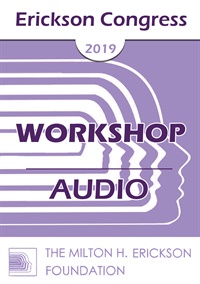
- Average Rating:
- Not yet rated
- Topic Areas:
- Workshops | Anxiety | Milton Erickson | Virginia Satir | Somatic Experiences | Hypnotherapy | Resources
- Categories:
- Erickson Congress | Erickson Congress 2019
- Faculty:
- Wei-Kai Hung, M.Ed., L.M.H.C., L.P.C. | Eva Wieprecht, MBA
- Duration:
- 1 Hour 58 Minutes
- Format:
- Audio Only
- Original Program Date:
- Dec 15, 2019
- Short Description:
- In this workshop, East and West blend, intertwine, and approach anxiety symptoms in a creative way. Eva from Germany, with her masterful practice in Satir somatic modeling, combined with Wei Kai from Taiwan, with his mindful practice in Tai Chi and Taoism hypnotherapy, will create a new model in treating anxiety. We both learned Ericksonian approach for years, and utilized various somatic movements to help self regulation, and increase self steering competencies in challenging times.
- Price:
- $15.00 - Base Price
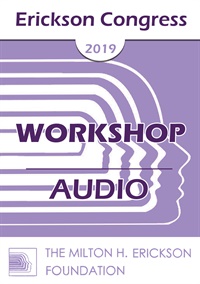
- Average Rating:
- Not yet rated
- Topic Areas:
- Workshops | Trance | Hypnotherapy | Unconscious Processes
- Categories:
- Erickson Congress | Erickson Congress 2019
- Faculty:
- Stephen Gilligan, PhD
- Duration:
- 2 Hours 1 Minutes
- Format:
- Audio Only
- Original Program Date:
- Dec 15, 2019
- Short Description:
- This workshop presents Dr. Gilligan’s latest work of Systemic Trance, which describes how we generate our realities via the (mostly unconscious) maps of who we are, and what the world is. These systemic filters can be held negatively (in neuro-muscular lock) or generatively (in creative flow), resulting in either problems or positive solutions. To transform problems into resources, Systemic Trance first identifies the key parts of a performance map, then uses generative trance to open a fluid conversational space where each part is positive valued and integrated into a resource pattern. Lecture, demonstration, case examples, and exercises will be included.
- Price:
- $15.00 - Base Price
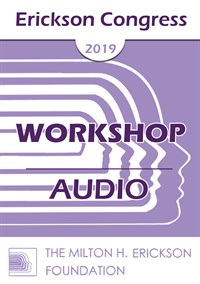
- Average Rating:
- Not yet rated
- Topic Areas:
- Workshops | Art and Creativity | Hypnosis | Hypnotherapy | Music
- Categories:
- Erickson Congress | Erickson Congress 2019
- Faculty:
- Norma Barretta, PhD | Jolie Barretta
- Duration:
- 1 Hour 55 Minutes
- Format:
- Audio Only
- Original Program Date:
- Dec 15, 2019
- Short Description:
- Hypnosis can interrupt dysfunctional loops, breaking negative patterns. With the skillful addition of sound that process is often speeded up and has a profound effect physiologically as well as psychologically, influencing and entraining the biological state of the subject. Participants will be shown how to enhance their awareness of tonality, volume, and the power inherent in vowel sounds. Using frequencies to deepen trance will be part of the group experience.
- Price:
- $15.00 - Base Price
- Average Rating:
- Not yet rated
- Topic Areas:
- Fundamentals of Hypnosis | Hypnosis | Hypnotic Phenomena | Hypnotherapy | Ericksonian Hypnosis and Therapy Techniques
- Categories:
- Erickson Congress | Erickson Congress 2019
- Faculty:
- Dan Short, PhD
- Course Levels:
- Master Degree or Higher in Health-Related Field
- Duration:
- 2 Hours 1 Minutes
- Format:
- Audio and Video
- Original Program Date:
- Dec 15, 2019
- Short Description:
- Erickson resisted standardized hypnotic protocols because he found that everyone responded to hypnosis uniquely. Rather than seeking to force his preferred hypnotic phenomena, he cultivated whatever came naturally. Fortunately, clinical objectives, such as pain relief, can be achieved using a variety of hypnotic phenomena. This session will identify three broad classes of hypnotic experiencing and provide guidance on how to identify natural predispositions.
- Price:
-
Sale is $29.00
price reduced from Base Price - $59.00
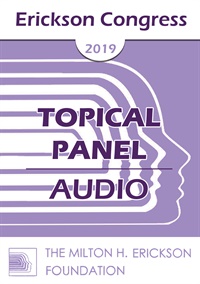
- Average Rating:
- Not yet rated
- Topic Areas:
- Workshops | Hypnosis | Future Oriented | Post-Traumatic Stress Disorder (PTSD) | Resources | Trauma | Hypnotherapy
- Categories:
- Erickson Congress | Erickson Congress 2019
- Faculty:
- Consuelo Casula, Dipl. Psych
- Duration:
- 1 Hour 49 Minutes
- Format:
- Audio Only
- Original Program Date:
- Dec 12, 2019
- Short Description:
- During our entire life - from adolescence to old age- we face transition phases, changes and passages going towards the future. During life passages hypnosis can help to harmonize the process of losses and winnings, change and adaptation, crisis and opportunity. The workshop will show a hypnotherapeutic model based on the identification of the resources of the present with which to revisit the traumas of the past and then turn to the future with hope and resiliency.
- Price:
- $15.00 - Base Price
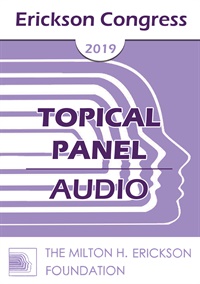
- Average Rating:
- Not yet rated
- Topic Areas:
- Workshops | Hypnotherapy | Indirection | Utilization | Ericksonian Hypnosis and Therapy Techniques
- Categories:
- Erickson Congress | Erickson Congress 2019
- Faculty:
- Gunther Schmidt, MD, MA
- Duration:
- 1 Hour 57 Minutes
- Format:
- Audio Only
- Original Program Date:
- Dec 12, 2019
- Short Description:
- Transparent hypnotherapy instead of indirectness- how clients as active co-hypnotherapist with all their senses can be invited to utilize symptoms as competent messengers of needs. In the Ericksonian tradition on the one side it is assumed that the knowledge and competences are already existent within the clients but on the other side many hypnotherapeutic interventions are structured as rather indirect and intransparent for the conscious mind of the clients.
- Price:
- $15.00 - Base Price
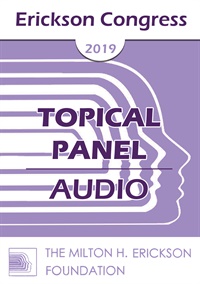
- Average Rating:
- Not yet rated
- Topic Areas:
- Workshops | Ericksonian Hypnosis and Therapy Techniques | Hypnotherapy | Hypnosis | Mind-Body
- Categories:
- Erickson Congress | Erickson Congress 2019
- Faculty:
- Douglas Flemons, PhD
- Duration:
- 1 Hour 54 Minutes
- Format:
- Audio Only
- Original Program Date:
- Dec 12, 2019
- Short Description:
- This workshop will go to the heart of Ericksonian hypnotherapy, in both senses of the word. We’ll use Gregory Bateson’s ideas about mind to illuminate the core or essence of an Ericksonian approach, exploring key principles and signature practices, such as utilization, metaphoric communication, and therapeutic double binds. But we’ll also explore the beating heart of this way of working—the application of empathy, the invitation of trance, and the evocation and facilitation of therapeutic change, all guided by a deep respect for and understanding of the mindfulness of the body and the embodiment of the mind.
- Price:
- $15.00 - Base Price
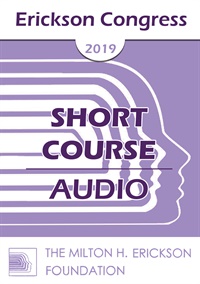
- Average Rating:
- Not yet rated
- Topic Areas:
- Short Courses | Hypnotherapy | Phobia | Hypnosis
- Categories:
- Erickson Congress | Erickson Congress 2019
- Faculty:
- Carlos Ramos, PhD
- Duration:
- 1 Hour 2 Minutes
- Format:
- Audio Only
- Original Program Date:
- Dec 12, 2019
- Short Description:
- The author of this research and presentation will explore how Douglas Flemons, the developer of relational hypnosis, facilitated an enduring non-volitional shift with a client, “Grace,” who desired to have a baby but could not see or talk about blood, needles, or medical procedures without fainting. Using context-enriched conversation analysis (CECA), the author will describe how he embraced his understanding of Ericksonian and Neo-Ericksonian hypnosis methods as a guide to examine multiple sources of data, which included selected audio-recorded excerpts from Douglas and Grace’s hypnotherapeutic sessions; Grace’s descriptions of change in her email correspondence with Douglas; and Douglas’s case notes.
- Price:
- $15.00 - Base Price
Tags: Hypnosis Hypnotherapy Phobias
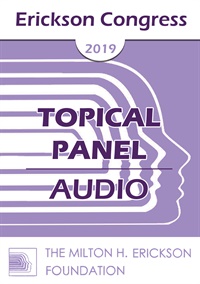
- Average Rating:
- Not yet rated
- Topic Areas:
- Workshops | Hypnotherapy | Mind-Body | Resistance | Couples Therapy
- Categories:
- Erickson Congress | Erickson Congress 2019
- Faculty:
- Bruce Gregory, PhD | Birgitta Gregory, PhD
- Duration:
- 1 Hour 58 Minutes
- Format:
- Audio Only
- Original Program Date:
- Dec 12, 2019
- Short Description:
- This workshop will explore how the processes and variables of quantum physics can be integrated with mind-body hypnotherapy in the treatment of couples and organizations. The intention of the workshop is to support the expansion of trust within professionals to contain resistance and creatively focus attention, facilitating novelty, rapport, and opportunities for learning. The Erickson Resistance Protocol and Poincare's four stage creative process will be utilized to provide a template to develop internal yes sets for quantum principles, processes and variables. Emphasis will be placed on how the grandiosity and victim subsets of resistance, and the appreciation of intent and accountability are related to the quantum variables of momentum, motion, time, space and position.
- Price:
- $15.00 - Base Price
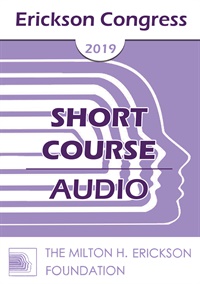
- Average Rating:
- Not yet rated
- Topic Areas:
- Short Courses | Art and Creativity | Hypnosis | Ericksonian Hypnosis and Therapy Techniques | Hypnotherapy | Music | Attunement
- Categories:
- Erickson Congress | Erickson Congress 2019
- Faculty:
- Anita Jung, M.S.
- Duration:
- 1 Hour 27 Minutes
- Format:
- Audio Only
- Original Program Date:
- Dec 12, 2019
- Short Description:
- The Greek philosopher Pythagoras was among the first to recognize the healing powers of music. Milton Erickson, the musician of mind, body and soul, was the first to structure communication for greatest effect so that clients could change many aspects of their life, not merely their presenting symptoms. Just as the cadence of voice and patterns of speech form the music of Ericksonian communication, repetition and rhythm create the emergence of a trance state in music, film, and in poetry. The utilization of art and creativity in a hypnotherapy model functions as a catalyst accentuating the nuances of core competencies such as tailoring, utilization, strategic approach, and destabilization.
- Price:
- $15.00 - Base Price
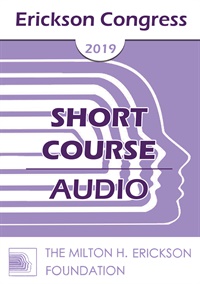
- Average Rating:
- Not yet rated
- Topic Areas:
- Short Courses | Ericksonian Hypnosis and Therapy Techniques | Hypnotherapy | Hypnosis
- Categories:
- Erickson Congress | Erickson Congress 2019
- Faculty:
- Jimena Castro, PhD | Eric Greenleaf, PhD
- Duration:
- 1 Hour 27 Minutes
- Format:
- Audio Only
- Original Program Date:
- Dec 12, 2019
- Short Description:
- Most descriptions of hypnotherapy come from clinicians. We talk about the ideas and techniques informing what we did with a case, and then we share what we observed and understood our client’s response to be. This workshop takes a different approach. The presenters—Drs. Eric Greenleaf and Jimena Castro—explore the creative synergy of Ericksonian hypnosis through the mutual participation and perspective of both therapist and patient.
- Price:
- $15.00 - Base Price
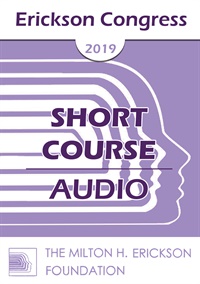
- Average Rating:
- Not yet rated
- Topic Areas:
- Short Courses | Art and Creativity | Hypnotherapy | Psychotherapy | Therapeutic Relationship | Therapist Development
- Categories:
- Erickson Congress | Erickson Congress 2019
- Faculty:
- Richard Hill, MBMSc, MEd, MA
- Duration:
- 1 Hour 30 Minutes
- Format:
- Audio Only
- Original Program Date:
- Dec 12, 2019
- Short Description:
- Hypnotherapy and psychotherapy have been developing over time through various phases. Directive therapies with an intervention orientation have shifted over the years to suggestive and client centered approaches. More recently both research and practice has opened our minds to relational and responsive approaches. The concept of “client responsiveness” is discussed in my book with Ernest Rossi, The Practitioner’s Guide to Mirroring Hands.
- Price:
- $15.00 - Base Price

- Average Rating:
- Not yet rated
- Topic Areas:
- Short Courses | Hypnotherapy | Aging and Mortality | Communication | Family Therapy
- Categories:
- Erickson Congress | Erickson Congress 2019
- Faculty:
- Stefan Hammel, MTh
- Duration:
- 1 Hour 29 Minutes
- Format:
- Audio Only
- Original Program Date:
- Dec 12, 2019
- Short Description:
- What can we do for dying people and their families in addition to palliative care? What is helpful to communicate during the last hours of life? In this workshop we bring integrate the millennium-old pictorial traditions of religion with techniques of hypnotherapy including pacing and leading, utilizing metaphors, and the evocation of values and convictions of dying patients with their families.
- Price:
- $15.00 - Base Price
- Average Rating:
- Not yet rated
- Topic Areas:
- Master Classes | Hypnosis | Psychotherapy | Ericksonian Hypnosis and Therapy Techniques | Ericksonian Psychotherapy | Experiential Therapy | Hypnotherapy
- Categories:
- Brief Therapy Conference | Brief Therapy Conference 2018
- Faculty:
- Michael Yapko, PhD | Jeffrey Zeig, PhD
- Course Levels:
- Master Degree or Higher in Health-Related Field
- Duration:
- 2:43:33
- Format:
- Audio and Video
- Original Program Date:
- Dec 10, 2018
- Short Description:
- This session explores how hypnosis and strategic therapy can help clients untangle patterns of avoidance, self-doubt, and family tension. By using affective dissociation, metaphors, and experiential learning, the master class demonstrates how to separate mood from action, strengthen integrity with self, and foster resilience. Participants gain insight into how language, stories, and relational dynamics can be woven into therapy to create lasting change.
- Price:
-
Sale is $29.00
price reduced from Base Price - $59.00
- Average Rating:
- Not yet rated
- Topic Areas:
- Master Classes | Hypnosis | Psychotherapy | Ericksonian Hypnosis and Therapy Techniques | Strategic Therapy | Ericksonian Psychotherapy | Experiential Therapy | Hypnotherapy
- Categories:
- Brief Therapy Conference | Brief Therapy Conference 2018
- Faculty:
- Michael Yapko, PhD | Jeffrey Zeig, PhD
- Course Levels:
- Master Degree or Higher in Health-Related Field
- Duration:
- 2:56:13
- Format:
- Audio and Video
- Original Program Date:
- Dec 10, 2018
- Short Description:
- In this interactive master class, live demonstrations show how hypnosis and experiential methods can help clients transform fear into resilience. One volunteer confronts a lifelong fear of deep water, discovering a powerful inner resource through imagery of her father’s love. Another works through the emotional aftermath of divorce, learning new ways to disarm old patterns of intimidation. The session highlights how metaphor, experiential sculpting, and hypnotic reframing can unlock unexpected pathways to strength and healing.
- Price:
-
Sale is $29.00
price reduced from Base Price - $59.00
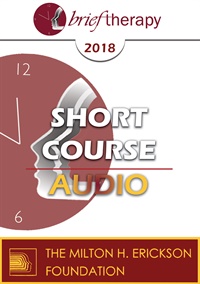
- Average Rating:
- Not yet rated
- Topic Areas:
- Short Courses | Depression | Eating Disorders | Brief Therapy | Hypnotherapy | Weight Loss
- Categories:
- Brief Therapy Conference | Brief Therapy Conference 2018
- Faculty:
- Margot Gotte-El Fartoukh, Dr. phil
- Duration:
- 1:26:23
- Format:
- Audio Only
- Original Program Date:
- Dec 06, 2018
- Short Description:
- The control of body weight is largely remote instinctively. When conscious efforts go nowhere, hypnotherapeutic strategies can open new possibilities. Presented is a model of hypnotherapeutic strategies of weight regulation introduced on the M.E.G. Congress 2018 in Bad Kissingen (Germany).
- Price:
- $15.00 - Base Price
- Average Rating:
- Not yet rated
- Topic Areas:
- Short Courses | Hypnotherapy | Somatic Experiences | Trauma | Children and Adolescent Therapy | Brief Therapy
- Categories:
- Brief Therapy Conference | Brief Therapy Conference 2018
- Faculty:
- Tobi Goldfus, LCSW
- Course Levels:
- Master Degree or Higher in Health-Related Field
- Duration:
- 1:09:59
- Format:
- Audio and Video
- Original Program Date:
- Dec 06, 2018
- Short Description:
- This workshop will examine the perimeters of cyber trust and cyber sincerity and offer assessment tools such as the Social Media Assessment Form and the Self-Report of Social Media Traumatic Experience Form to move into more informed, attuned and effective positions of intervention.
- Price:
-
Sale is $29.00
price reduced from Base Price - $59.00
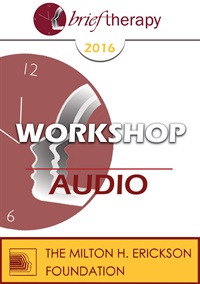
- Average Rating:
- Not yet rated
- Topic Areas:
- Anxiety | Workshops | Brief Therapy | Pain and Healing | Psychotherapy
- Categories:
- Brief Therapy Conference | Brief Therapy Conference 2016
- Faculty:
- Assen Alladin, PhD
- Duration:
- 2:48:47
- Format:
- Audio Only
- Original Program Date:
- Dec 11, 2016
- Short Description:
- This workshop shows how emotional injuries shape anxiety and how clinicians can access and heal those deeper layers. Participants learn an integrative approach that blends CBT, mindfulness, and hypnotherapeutic methods to uncover implicit fears, strengthen adult ego states, and create lasting change beyond symptom relief.
- Price:
- $15.00 - Base Price

- Average Rating:
- Not yet rated
- Topic Areas:
- Hypnosis | Hypnotherapy | Short Courses | Brief Therapy | Self-Hypnosis | Single-Session | Anxiety | Stress | Depression
- Categories:
- Brief Therapy Conference | Brief Therapy Conference 2016
- Faculty:
- Paul Koeck, MD
- Duration:
- 1:26:19
- Format:
- Audio Only
- Original Program Date:
- Dec 08, 2016
- Short Description:
- During this workshop with live clinical demonstration, you will learn how to teach your patients ‘Hypnotic Scaling’ in one single session! Hypnotic Scaling is an auto-hypnotic technique to help your patient resolve any problem, stress, anxiety, depression, low self-esteem, … because they will learn how to move up (or down) on their unconscious state-dependent scale from zero to 10 at any moment.
- Price:
- $15.00 - Base Price
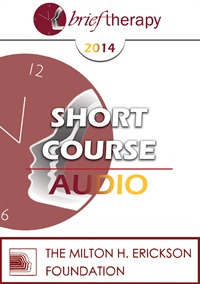
- Average Rating:
- Not yet rated
- Topic Areas:
- Short Courses | Hypnosis | Hypnotherapy | Self-Hypnosis | Ericksonian Hypnosis and Therapy Techniques | Anxiety | Depression | Post-Traumatic Stress Disorder (PTSD)
- Categories:
- Brief Therapy Conference | Brief Therapy Conference 2014
- Faculty:
- Paul Koeck, MD
- Duration:
- 1:37:58
- Format:
- Audio Only
- Original Program Date:
- Dec 11, 2014
- Short Description:
- Hypnotic Scaling is a simple Ericksonian & Solution Focused (self)hypnotic technique, developed by Paul Koeck, MD to help your client self-control and resolve Anxiety and Depression or symptoms of PTSD. You will be able to teach your client to freely choose where (s)he wants to be at a scale from 0 to 10 at any moment or in any context using (Self) Hypnotic Scaling. Your client will be able to choose his emotions, thoughts or feelings when and where (s)he wants!
- Price:
- $15.00 - Base Price
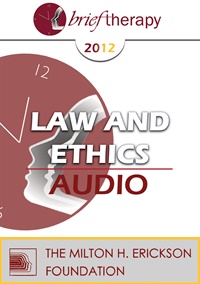
- Average Rating:
- Not yet rated
- Topic Areas:
- Master Classes | Brief Therapy | Experiential Therapy | Gestalt | Hypnosis | Ericksonian Hypnosis and Therapy Techniques | Hypnotherapy | Psychotherapy
- Categories:
- Brief Therapy Conference | Brief Therapy Conference 2012
- Faculty:
- Jeffrey Zeig, PhD | Erving Polster, PhD
- Duration:
- 2:40:44
- Format:
- Audio Only
- Original Program Date:
- Dec 10, 2012
- Short Description:
- Gestalt therapy and Ericksonian hypnotherapy are experiential methods of change. In combination they can be synergistic. Psychotherapy is best when clients have first-hand experience of an alive therapeutic process. Such dynamic empowering experiences pave the way for dynamic understandings. Drs. Polster and Zeig will engage with each other and participants to examine commonalities and differences in their work in this engaging all-day workshop.
- Price:
- $15.00 - Base Price
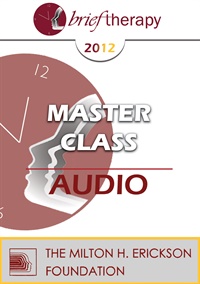
- Average Rating:
- Not yet rated
- Topic Areas:
- Master Classes | Brief Therapy | Experiential Therapy | Gestalt | Hypnosis | Hypnotherapy | Psychotherapy | Ericksonian Hypnosis and Therapy Techniques
- Categories:
- Brief Therapy Conference | Brief Therapy Conference 2012
- Faculty:
- Jeffrey Zeig, PhD | Erving Polster, PhD
- Duration:
- 2:44:44
- Format:
- Audio Only
- Original Program Date:
- Dec 10, 2012
- Short Description:
- Gestalt therapy and Ericksonian hypnotherapy are experiential methods of change. In combination they can be synergistic. Psychotherapy is best when clients have first-hand experience of an alive therapeutic process. Such dynamic empowering experiences pave the way for dynamic understandings. Drs. Polster and Zeig will engage with each other and participants to examine commonalities and differences in their work in this engaging all-day workshop.
- Price:
- $15.00 - Base Price
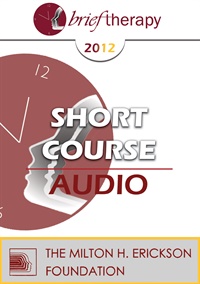
- Average Rating:
- Not yet rated
- Topic Areas:
- Hypnotherapy | Children and Adolescent Therapy | Short Courses
- Categories:
- Brief Therapy Conference | Brief Therapy Conference 2012
- Faculty:
- Tobi Goldfus, LCSW
- Duration:
- 1:18:00
- Format:
- Audio Only
- Original Program Date:
- Dec 09, 2012
- Short Description:
- BT12 Short Course 34 – Unplugging from the Outside in: Brief Strategic Hypnotherapy with Older Adolescents and Young Adults (Ages 16-25) – Tobi Goldfus, LCSW-C BCD With a plugged-in 24/7 cyberspace that demands and creates instantaneous response to internet and social networking, many young people have difficulty understanding self-regulation and present a lack of selfawareness and modulation. This workshop proposes a tailored strategic approach toward utilizing the natural creativity and novelty that young people have embedded in their development make-up but often have limited access toward using their inner resources. Experiential and specific ways to elicit responsiveness and enhance “down regulation” will be explored.
- Price:
- $15.00 - Base Price
Tags: Adolescents Children Hypnotherapy


